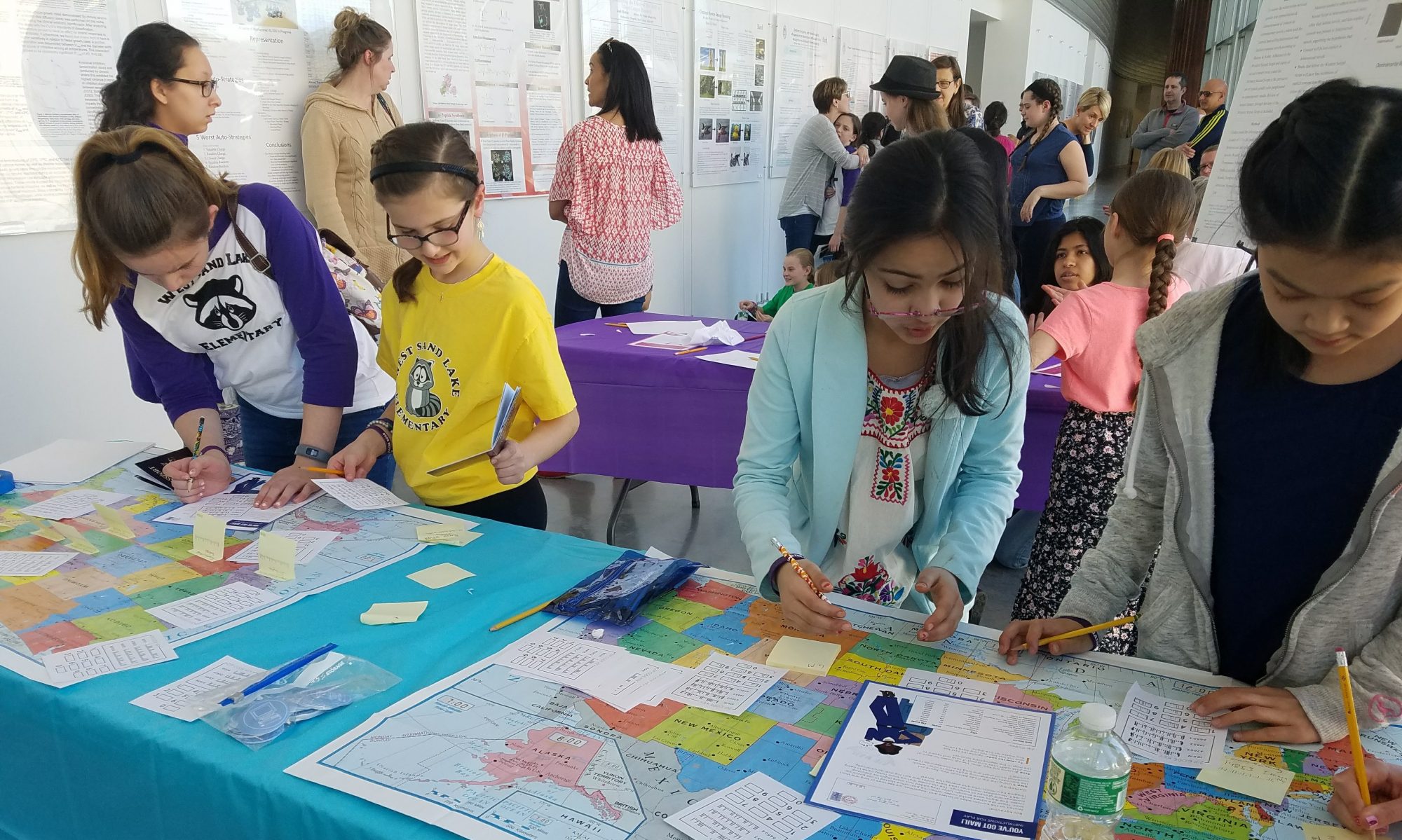Welcome back to another day at the Bard Math CAMP!
As the day began, CAMPers once again dove into a variety of opening activities, such as games that tested their strategic thinking and teamwork skills, another intriguing Math Challenge presented by Mason, and continuing their art projects from previous classes, refining their designs and adding creative touches to their works. This combination of activities set a dynamic tone for the rest of the day.





Japheth kicked off the day with his Cosine Math Class by reviewing concepts from the previous session. Japheth emphasized the power of simplifying complex problems using algebraic equations, making seemingly difficult tasks much easier. CAMPers then worked in groups to explain to each other how to find the degrees of polygons using these equations, ensuring everyone understood before moving on.
Afterwards, CAMPers moved to drawing a 4X2Y polygon and identifying the X and Y axes. Japheth, building off of Shoshi’s Art Class, touched on the fascinating craft of hexaflexagons, highlighting the importance of precise angles to create a perfect one. Then, CAMPers faced a challenge: figuring out the angular domino effect of Japheth’s hexaflexagon if it had been first folded with a 76-degree angle instead of a 60-degree angle.
CAMPers revisited star polygons, this time focusing on a seven-sided star. CAMPers learned how to use the external angle method to determine the internal angles of each point, adding another layer to their geometric knowledge.





In Frances’ Sine class, CAMPers began with a review from the previous day before diving into more shapes that tessellate. CAMPers explored why these new shapes work in tessellations and hypothesized whether a decagon (10-sided polygon) would also tessellate. This eventually led to a discussion on whether a flat plane could be considered a square.
Using blocks, CAMPers configured different tessellations from previous days, experimenting with various patterns and shapes. They observed the unique properties of each shape and how they fit together seamlessly, enhancing their understanding of geometric relationships.



After lunch and before the rain in the afternoon, CAMPers had the opportunity to participate in various electives!
In Intro to Circuits, CAMPers continued their projects from yesterday. They successfully conducted electricity through their creations, lighting up LED bulbs. They learned about the role of resistance in preventing conduction and how the pressure they applied to their projects affected the outcome. CAMPers also experimented with breadboards, learning how to make their LED lights flash by controlling the flow of electricity through them.





Some CAMPers took a walk to the Parliament of Reality with Yulia, exploring Bard College’s beautiful campus.

but Friday would be another beautiful day to go with your CAMPer!
Others stayed inside and tackled Paper Puzzles with Mason and Gemma, exercising their problem-solving muscles:

And the rest of the CAMPers attended Unit Origami with special guests Milo Pomarico and CAMP alumni Hadley Parum! Milo and Hadley led CAMPers through an exciting art elective, creating a Bird Tetrahedron. All CAMPers worked together to build the base of the structure, and will be able to put it all together by the end of the week, constructing one large Bird Tetrahedron out of everyone’s hard work.





Shoshi’s Art Class was a hit, guiding CAMPers through the intricate process of assembling wooden blocks to create magic cubes that could transform into various shapes. Each CAMPer had the chance to personalize their cubes with unique designs, colors, and patterns, allowing them to express their individuality and artistic flair. The activity not only honed their craftsmanship and attention to detail but also illustrated the intersection of art and geometry.
As the CAMPers worked on their projects, Shoshi played music that added a lively ambiance to the classroom. The combination of creativity, music, and hands-on learning made for an enjoyable art session. The CAMPers left the class with a sense of accomplishment and a deeper appreciation for the artistic potential of geometric shapes.




Yulia’s Computer Science Class continued to build on the fundamentals of turtle graphics. CAMPers reviewed how to draw with turtles, set their colors, and change their shapes. They also learned new commands such as “rt num,” “lt num,” and “fd num,” which allowed them to create more complex drawings.
CAMPers drew regular and isosceles triangles and polygons with their turtles, even managing to draw a human figure! Yulia introduced the concept of X and Y in their world, helping CAMPers understand how these coordinates correspond to their drawings.
Then, they moved on to creating patch mosaics and learned how to use functions in their code to automate the drawing of polygons. This coding exercise sparked creativity and problem-solving skills among the CAMPers.





Finally, CAMPers convened in the art classroom for their final activities, including block tessellations, group games, and more origami. Since CAMP Day 1, there has been considerable debate among the CAMPers about turtles: whether they should be kept “alive” for their value, “dead” to create something new, or if they aren’t living at all, making neither answer correct. The poll results are as follows:
| Alive | Dead | Not Living, Neither |
| 9 | 2 | 10 |
As another day at the Bard Math CAMP comes to an end, we look forward to more adventures and discoveries tomorrow. The teamwork, creativity, and enthusiasm of all the CAMPers continues to inspire us. Stay tuned for more updates!















































































